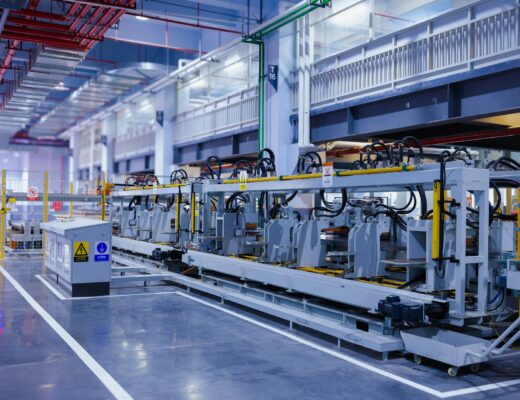Every year, foodborne illnesses affect millions of consumers and result in costly recalls that can devastate brands overnight. The Centers for Disease Control and Prevention estimates that 48 million Americans get sick from contaminated food annually, leading to 128,000 hospitalizations and 3,000 deaths. Behind these alarming statistics lie preventable mistakes that occur throughout the food supply chain.
Understanding and addressing these errors is essential for protecting public health and maintaining business reputation. From processing facilities to retail environments, improper practices can introduce harmful pathogens, chemical contaminants, and physical hazards into products. The consumer packaged good industry faces unique challenges in maintaining product integrity across complex distribution networks.
This comprehensive guide examines the most common errors that compromise food safety and provides actionable strategies to prevent them. Whether you manage a processing facility, work in quality assurance, or oversee food service operations, these insights will help you build stronger defense systems against contamination risks.
Temperature Control Failures Lead to Bacterial Growth
Temperature abuse remains one of the most frequent and dangerous mistakes in food handling. Bacteria multiply rapidly in the “danger zone” between 40°F and 140°F, doubling every 20 minutes under optimal conditions.
Inadequate Cold Chain Management
The cold chain begins at harvest or processing and continues through distribution, storage, and final sale. Breaks in this chain create opportunities for pathogen growth that may not be immediately visible or detectable.
Common temperature control failures include:
- Loading trucks without pre-cooling them to proper temperatures
- Exceeding maximum load limits that prevent adequate air circulation
- Using faulty or uncalibrated temperature monitoring equipment
- Failing to maintain backup power systems for refrigeration units
Improper Thawing Procedures
Many facilities still use dangerous thawing methods that expose products to temperature abuse. Leaving frozen items at room temperature or using hot water for rapid thawing creates ideal conditions for bacterial multiplication on food surfaces while centers remain frozen.
Safe thawing requires planning and proper equipment. Refrigerator thawing, cold water immersion with regular water changes, or approved microwave methods maintain product integrity while preventing pathogen growth.
Cross-Contamination Through Poor Separation Practices
Cross-contamination occurs when harmful substances transfer from one food item to another through direct contact, shared equipment, or contaminated surfaces. This invisible threat can turn safe ingredients into hazardous products.
Inadequate Equipment Sanitization
Shared processing equipment creates significant contamination risks when cleaning procedures fall short of industry standards. Conveyor belts, cutting surfaces, and mixing equipment can harbor pathogens that spread throughout production runs.
Effective sanitization requires both physical cleaning to remove visible debris and chemical treatment to eliminate microscopic threats. Many facilities make the mistake of rushing this process or using incorrect chemical concentrations.
Improper Personal Hygiene Protocols
Workers serve as potential contamination vectors when hygiene protocols lack clarity or enforcement. Hand contamination alone can introduce pathogens to hundreds of food items during a single shift.
Critical hygiene safety tips include mandatory handwashing after specific activities, proper glove usage and changes, and appropriate protective clothing for different work areas. Training programs must address not just the procedures but the scientific reasoning behind them.
Chemical Contamination From Storage and Application Errors
Chemical hazards pose serious health risks and can result from cleaning agents, pesticides, or industrial compounds that accidentally contact food products.
Incorrect Chemical Storage
Storing cleaning chemicals near food items or using food containers for chemical storage creates obvious contamination risks. Less obvious dangers include vapors from improperly sealed containers and residue from inadequately rinsed surfaces.
Proper chemical storage requires designated areas with appropriate ventilation, clear labeling systems, and physical separation from all food contact surfaces. Secondary containment prevents spills from spreading to adjacent areas.
Inadequate Cleaning Agent Removal
Cleaning chemicals that remain on food contact surfaces after sanitization can cause chemical burns, allergic reactions, or poisoning. This contamination prevention challenge requires precise timing and thorough rinsing procedures.
Establishing verification procedures helps ensure complete chemical removal. Test strips, rinse water testing, and visual inspections provide multiple checkpoints against chemical residue problems.
Physical Contaminants From Equipment and Environmental Sources
Physical hazards include any foreign objects that enter food products during processing, packaging, or handling. These contaminants range from obvious threats like glass fragments to subtle dangers like metal shavings.
Inadequate Equipment Maintenance
Worn equipment components create ongoing contamination risks as parts deteriorate and small fragments break away. Conveyor systems, cutting blades, and packaging machinery require regular inspection and replacement of wear-prone components.
Preventive maintenance programs should include contamination risk assessments for each piece of equipment. Critical components may require more frequent inspection cycles or backup systems to prevent production delays.
Poor Environmental Controls
Environmental factors like overhead fixtures, ventilation systems, and structural elements can introduce physical contaminants throughout facilities. Peeling paint, loose fasteners, and inadequate pest control create ongoing hazard sources.
Regular facility audits help identify potential contamination sources before they cause problems. Systematic documentation tracks corrective actions and prevents recurring issues.
Documentation and Traceability Gaps
Incomplete record-keeping prevents effective investigation of contamination incidents and can slow critical recall procedures that protect public health.
Insufficient Monitoring Records
Temperature logs, cleaning schedules, and inspection records provide essential evidence of proper safety protocols. Gaps in documentation create liability exposure and regulatory compliance issues.
Digital monitoring systems can automate much of this record-keeping while providing real-time alerts for critical deviations. However, backup procedures remain essential for system failures.
Inadequate Supplier Verification
Contamination often originates with raw materials or ingredients that appear safe but carry hidden hazards. Without proper supplier verification programs, facilities inherit unknown risks that may not surface until products reach consumers.
Comprehensive supplier programs include on-site audits, certificate analysis, and incoming inspection procedures. Third-party certifications provide additional verification layers but cannot replace direct oversight.
Building Stronger Defense Systems
Effective contamination prevention requires systematic approaches that address root causes rather than simply responding to obvious problems. The most successful programs integrate multiple safety layers that provide backup protection when individual controls fail.
Regular training keeps safety awareness fresh while updated procedures reflect evolving industry knowledge. Management commitment ensures adequate resources for prevention programs and creates accountability throughout organizations.
Continuous improvement processes help facilities learn from near-misses and industry incidents. Sharing information across industry networks strengthens overall food safety while protecting individual competitive positions.
Modern technology offers new tools for contamination prevention, from automated monitoring systems to rapid testing methods. However, technology cannot replace fundamental good practices and human vigilance that form the foundation of food safety.







